
| Version | Summary | Created by | Modification | Content Size | Created at | Operation |
|---|---|---|---|---|---|---|
| 1 | Vivi Li | -- | 1967 | 2022-11-11 01:43:53 |
Video Upload Options
A panel van (or panelvan) is a form of solid (rigid-bodied, non-articulated) van, smaller than a lorry or truck, without rear side windows. In the UK this body style is referred to as a "car-derived van" and in North American as a "sedan delivery" (while the term "panel van" or "cargo van" generally refers to larger, truck-based vans such as the Ford E-Series and Chevrolet Express). In Australia panel vans were a development of the Australian "ute" (utility), a variety of pickup, based on a car chassis, these often utilizing the floorpan of the station wagon model. In North America a two-door station wagon base was used with only front seats and steel sheet-metal panels in place of the rear and side windows. Panel vans are widely used in many parts of the world for transporting cargo. In some national usages it is distinct from a purpose-designed van in that it is based on the chassis of a family car design. In places where they are distinct from a "van", they have less cargo space but better agility and maneuverability, making them particularly suited for cities with narrow streets or heavy traffic.
1. Origins
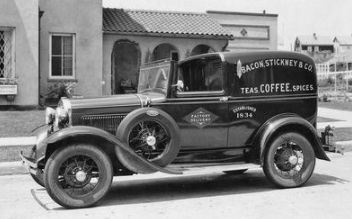
It is not known when the first panel van entered production, however it became an established type of vehicle by the end of the 1920s.[1]
The panel van body style has experienced separate evolutions in America, Europe and Australia, as a result of the separate evolutions of the passenger car platforms (upon which the panel van is based) in each region.
2. North America

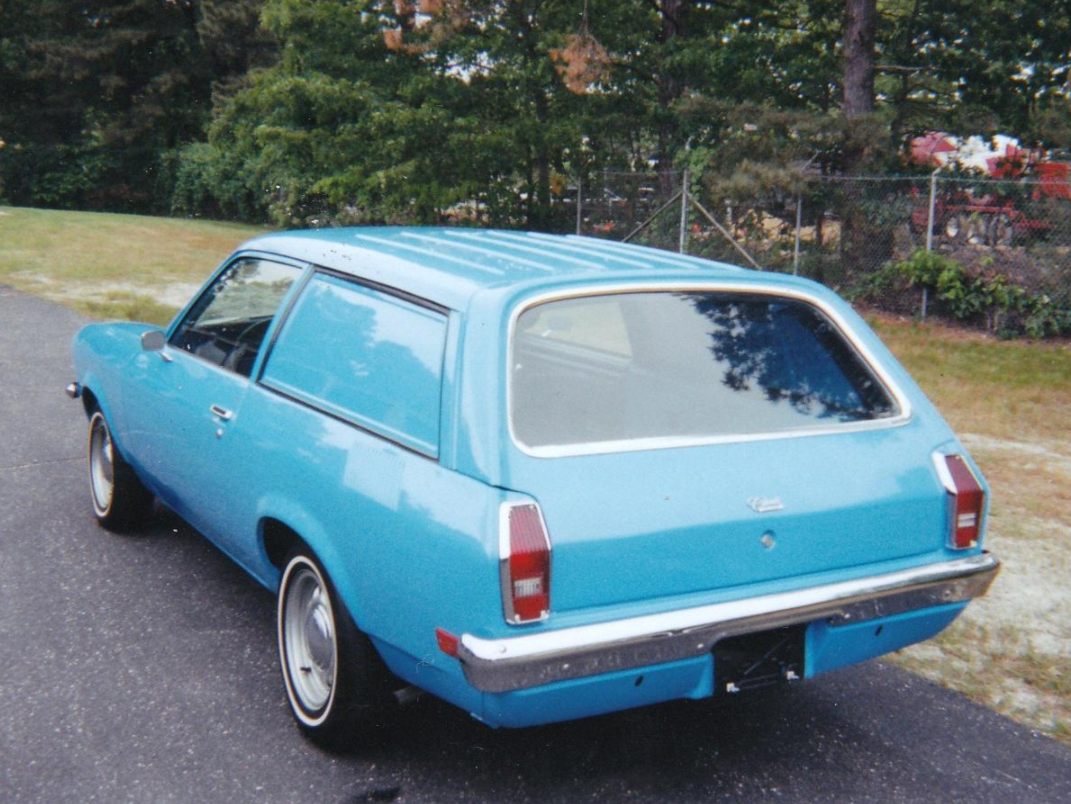
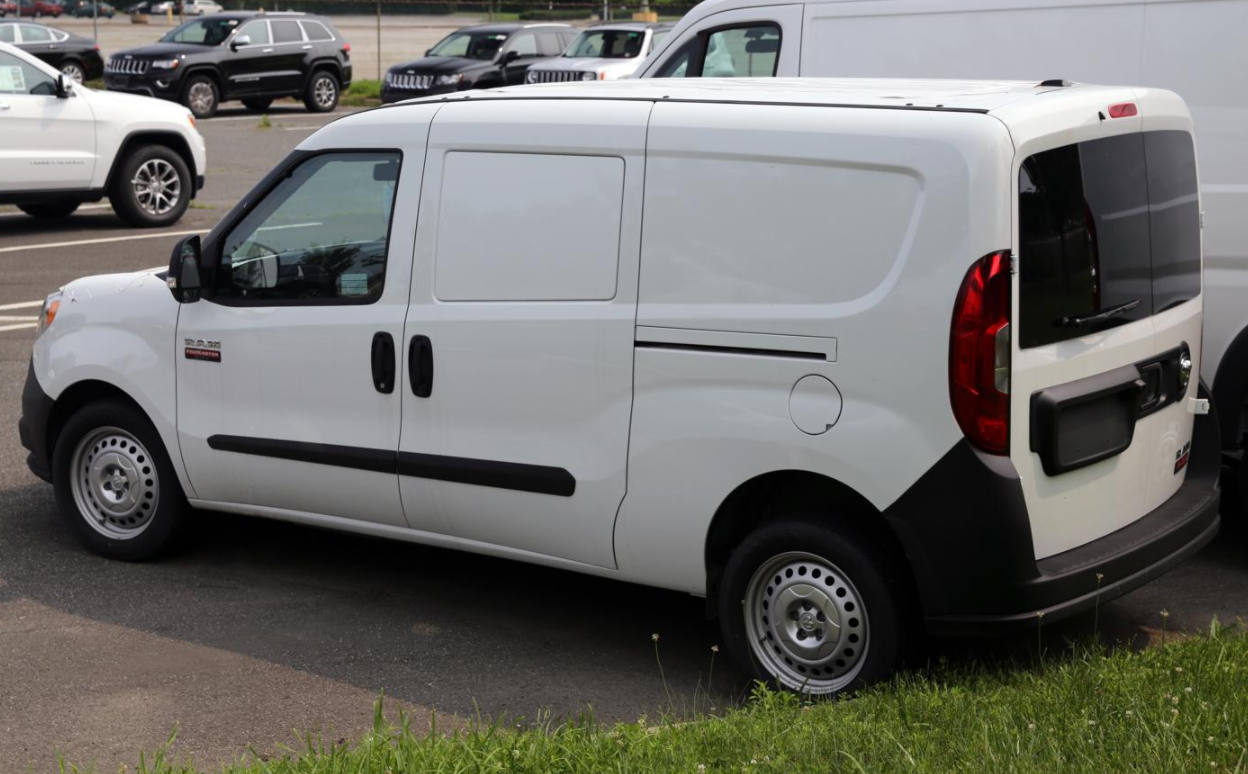
A panel van is often known as a "sedan delivery" in North America. As per panel vans in other countries, North American sedan deliveries are based on a passenger car chassis,[2] for example the Ford Transit Connect and Ram ProMaster City. One exception is the 1954 Chevrolet 3100 panel van, which is based on a truck chassis but named a panel van. Usually vehicles which are based on a truck chassis are called "panel trucks".[3][4]
In the late 1920s, Ford produced "Town Car Delivery" and "Wood Panel Delivery" as part of the Ford Model A model range.[5] Later Plymouth produced a sedan delivery from 1935 until 1941.[6] Pontiac produced deliveries until 1953 in the U.S. and until 1958 in Canada based on the Pontiac Pathfinder.[7] Sedan delivery models were usually produced in small quantities of 200 or less, for example 449 Canadian Pontiac sedan deliveries were built in 1958.
From 1959 on, the sedan delivery was no longer practical; it was phased out in 1960 as a Chevrolet model, so the requisite Chevrolet body was no longer available.[8] With the growing sales of the Volkswagen Type 2 and the introduction of compact vans, sedan deliveries faded from the scene. Chevrolet dropped the body type after 1960, while Ford moved it to the Falcon line-up until 1965.[9]
In the 1970s, Chevrolet and Ford offered subcompact sedan deliveries with the Chevrolet Vega Panel Express and the Ford Pinto Panel Wagon. The Vega Panel Express was introduced in September 1970 and it was Chevy's first sedan delivery in ten years since the final full-size model was offered in 1960.[10] The Vega Panel Express body style accounted for less than 2% of the total Chevrolet Vegas produced during the 1971 through 1975 model years.[9] First year sales of the Vega Panel Express peaked at 7,800 units and after leveling off to 4,000 units per year, only 1,525 were sold in 1975.[11] The Pontiac Astre Panel, Pontiac's version of the Vega Panel Express, was available in Canada in the 1973-75 model years and in the US for 1975.[7] The Pinto Panel Wagon was introduced in 1976 and was offered in both a commercial and a "factory customized" Pinto Cruising Wagon version that featured a round porthole style window on each side.[9] The Ford Courier name, previously used for Ford sedan delivery vans, began to be used with Ford's import pickup truck line.[12]
The sedan deliveries currently sold by American manufacturers are re-badged models from their overseas divisions, for example the Ford Transit Connect and Dodge Ram ProMaster City.
3. Europe

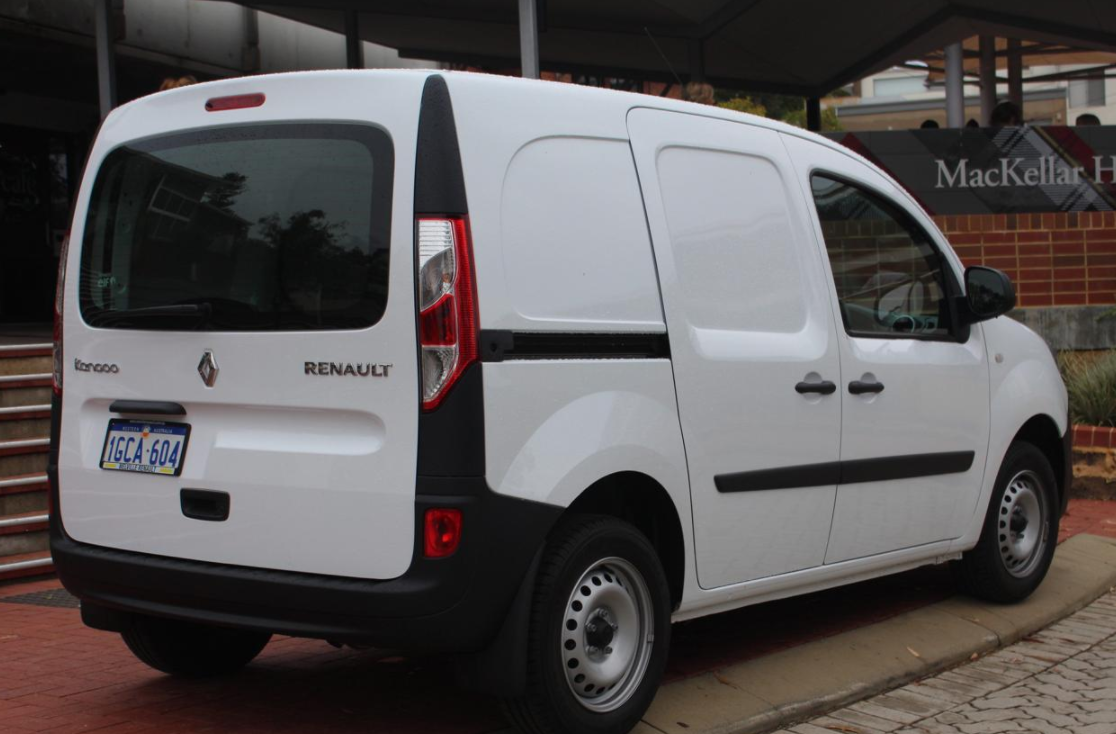
European panel vans of the 20th century include the Citroën 2CV Fourgonnette, Morris Minor, Renault Estafette, Citroën H Van, Citroën C15, SEAT Inca[13] and more recently the Renault Kangoo and the Opel Combo.[14] Currently, panel van body styles are offered on vehicles including the Škoda Fabia, Opel Astra, Fiat Uno, Peugeot 205 and Ford Fiesta.
From the 1950s onwards, a larger alternative to the panel van was the van (based on a commercial vehicle chassis instead of a passenger car chassis), such as the Volkswagen Type 2, the DKW van and the first-generation Ford Transit in 1965.[15][16][17]
In the United Kingdom, panel vans benefit from having lower taxes than station wagons[18] and do not have the speed restrictions which apply to larger vans.[19] This has given rise to some anomalies, such as the first Citroën Berlingo model. As this was first sold in the UK as a van, it's counted as a van-derived car and so does not have the speed advantage, despite the two vehicles being otherwise comparable.[20]
4. Australia
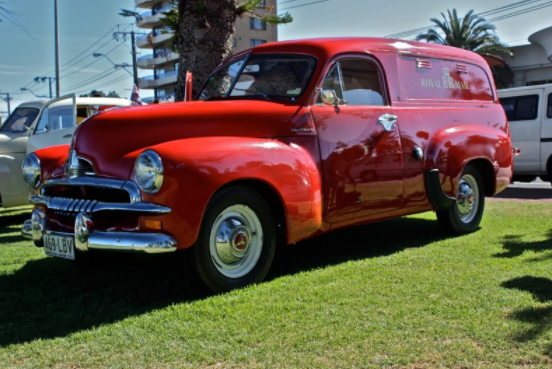
Panel vans were first offered by Holden from December 1953 in the FJ model, and by Ford Australia from May 1961, based on the XK Falcon. Painters, electricians, and general labourers quickly found panel vans ideal for their trades, as the cargo bay offering extended capacity otherwise wasted in passenger space, and a highly customisable interior, without the bulk or extended dimensions of other longer-base vans. Australian police forces also purchased fleets of panel vans to use in a black maria, or paddywagon, role. These were known formally as Divisional Vans and in slang as Divvy Vans.
4.1. Concept
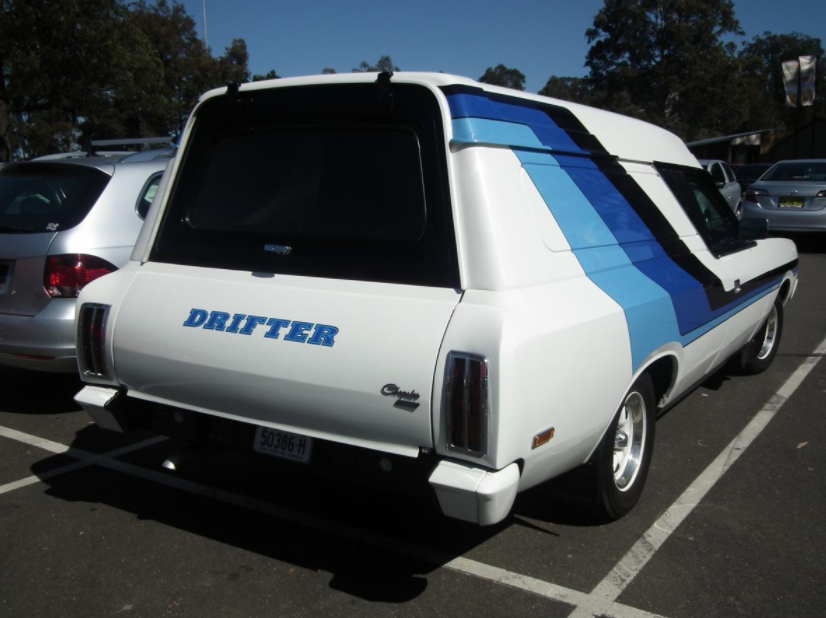
Most utes usually had an option of metal, then later rigid plastic, shells that would fit over the back of the tray of the ute, thereby extending the vertical space drivers could store in the tray, usually to just above the existing roofline of the passenger cab. Later shells offered plastic windows for ventilation along the sides and even pop-out or swing-out windows at the rear to aid the driver's rear vision. These became integrated into the body of the ute itself to form a panel van which integrated the passenger cabin with the cargo area soon developed a raised roofline, thus offering more rear space than a conventional station wagon with its rear seats folded down.
Initial models were fitted at the rear with swing-down and -up doors (like utes) and a low roofline (comparable to sedan and wagons), but soon evolved a higher roofline which increased available capacity, and improved internal access between cabin and storage areas. In the 70s Ford adopted a "barn-door" configurations that opened out to the sides of the vehicle, rather than down, aiding the loading of bulky freight into the vehicle without (as badly) damaging the body, though retained the traditional doors as an option through to the 80s. Passengers could climb from the interior passenger cab into the cargo bay behind them easily. Later the installation of safety cages which segregated passengers from the cargo area became popular to prevent freight from the back sliding into the passenger cab (and potentially injuring the driver).
By the early 1970s, at a time when the American panelvan was in decline, panel vans had become Australian cultural icons.[21] The Holden Sandman is probably the best-remembered of these: for example, one of the vehicles driven by Mel Gibson in the 1979 movie Mad Max was thought to be either a Holden Sandman or a customised Holden panel van (apparently a 1975 HJ model in both cases).[22] Ford panel vans (known briefly as Sundowners) were also popular, to a lesser degree. Chrysler also came to the party in 1976, offering a CL model Valiant panel van dubbed the Chrysler Drifter, but these could not compete with the popularity of Ford and particularly Holden, and were axed in 1978.
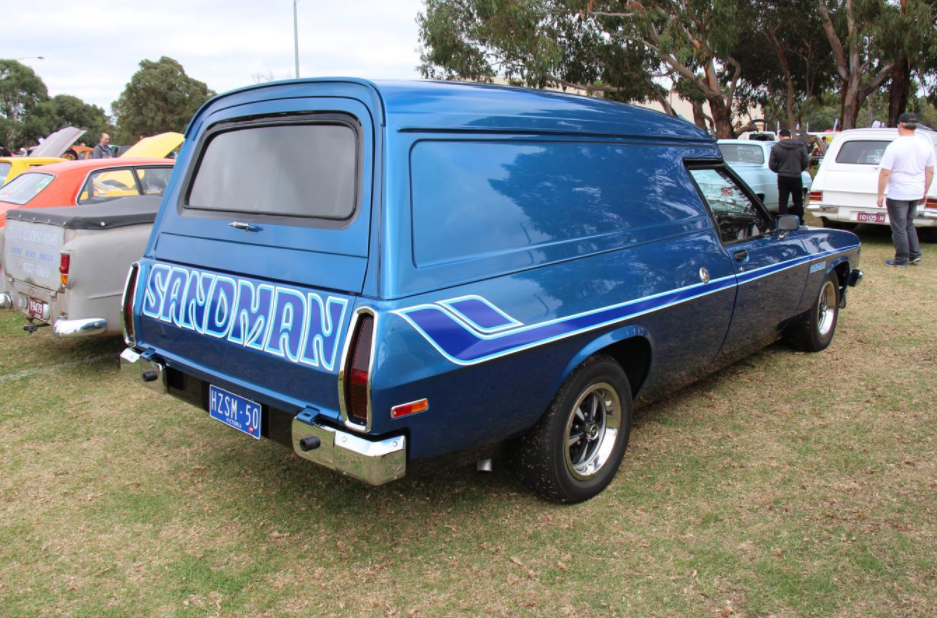
The final production of Holden's Sandman in the HZ series, featured a choice of V8 engines only, along with a four-headlight grille and under bumper front spoiler. According to a GMH Price List dated 25 January 1979, a basic HZ Holden panel van was priced at A$6,076, with the Sandman option package an additional A$1,700. The further optional components also included 5.0 litre V8 engine and a limited slip differential. If a buyer selected every Sandman extra, they would get a bonus velvet mattress with Holden logo embroidered. The price would be more than 150% of the cost of the basic HZ model. By the end of 1979, the Sandman had largely lost its place in the contemporary Australian youth culture - order figures were down and many of the vehicles were now being sold with the stripes and tailgate logos deleted. The Sandman ute was phased out of production prior to the van, the last of which was manufactured in October 1979.
4.2. In Popular Culture
Younger drivers were especially attracted to panel vans, for reasons such as the ease with which a mattress could be installed within the cargo bay. Consequently, panel vans also attracted nicknames such as "sin bins," "shaggin' wagons," "mobile virgin conversion units", "screw canoes," "Scooby-Doo mobiles" (after the Mystery Machine of the Hanna-Barbera animated cartoons), and "fuck trucks".[23] This kind of activity was frequently carried out at the local drive-in theatre. During the 1970s it also became fashionable to decorate the exterior sides with murals, often painted with intricate detail.[24] Along with the Volkswagen Kombi, panel vans were very popular with surfers (or wanna-be's), as it was convenient to sleep in the cargo bay during surfing "safaris", as well as carry boards and other equipment.
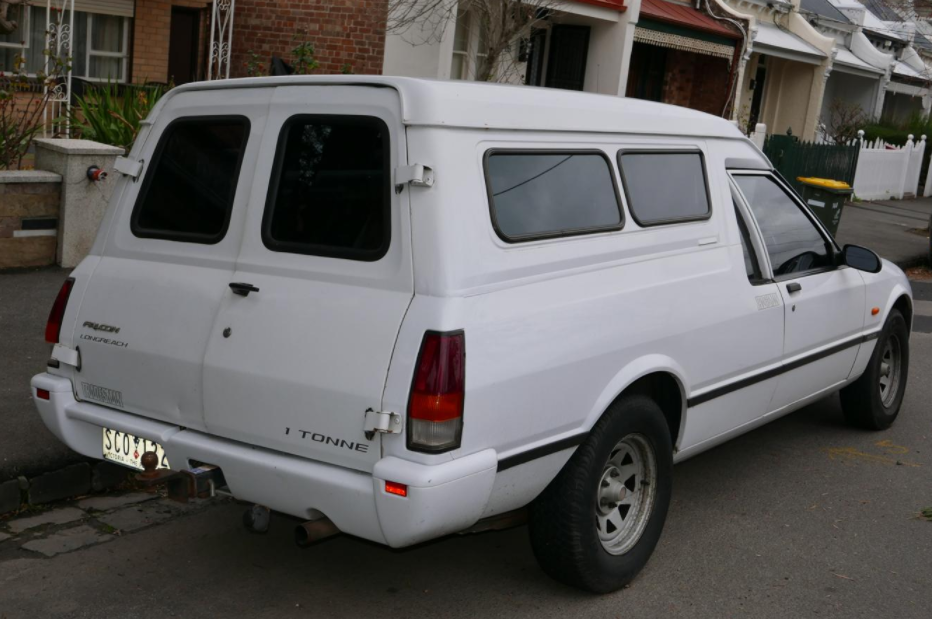
4.3. Decline
The popularity of panel vans waned in the 1980s. Holden's last release was their WB model. Subsequently, Ford became the sole manufacturer of them until 1999 when production of last entry in the history of the Australian panel van, the Ford Falcon XH model, ceased. In 2000, Holden unveiled a Sandman show car based on their Holden VU Ute of the time. This Sandman was never released, however from 2003 to 2005 an optional canopy in the same style was sold as panel vans, however they still retained the rear window and firewall of the ute they were originally based on, preventing movement between the cargo bay and the passenger cab, as offered by traditional panel vans.
5. Current Production Models
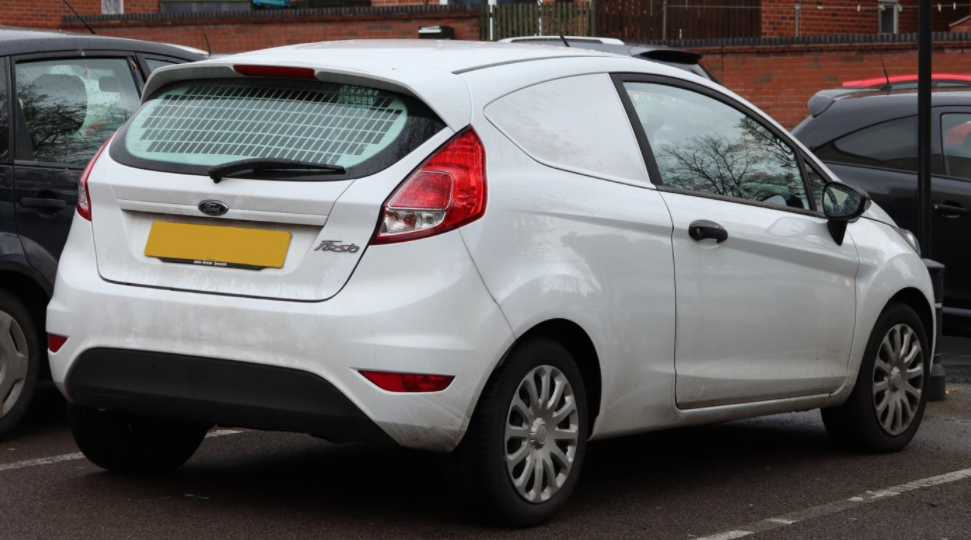
Chrysler showed a concept car edition of a sedan delivery based on the PT Cruiser at the North American International Auto Show in 2002, but it was not manufactured. In 2007 Chevrolet released a Sedan delivery version of the HHR, marketed as the HHR Panel.[25] In 2012, Ford of Europe introduced a Sedan Delivery configuration of the Ford Fiesta.[26]
Examples of the new wave of panel vans are the Renault Kangoo (1997), the Fiat Doblò (2001), Opel Combo (2001), Ford Transit Connect (2002) or the Volkswagen Caddy (2004). They are also purpose-designed to be utilitarian base model MPVs / people carriers, for a range of such vehicles. Due to economic crisis and strong shift on SUVs and CUVs, only two panel vans which are all-new models being released recently are Dacia Dokker (2012) and Ford Transit Connect (2013).
References
- "What is a Panel Van?". https://www.wisegeek.com/what-is-a-panel-van.htm. Retrieved 18 June 2018.
- "Another look at sedan deliveries". https://macsmotorcitygarage.com/another-look-at-sedan-deliveries/. Retrieved 20 June 2018.
- "History of the Chevy Truck: 1955-1962" (in en). https://hhclassic.com/n-11535-history-chevy-truck-1955-1962.html. Retrieved 11 March 2018.
- Ernst, Kurt (27 April 2014). "Hemmings Find of the Day – 1955 Chevrolet 3100 panel truck". https://www.hemmings.com/blog/2014/04/27/hemmings-find-of-the-day-1955-chevrolet-3100-panel-truck/. Retrieved 11 March 2018.
- "Putting on the Ritz – The Model A Ford Town Car Sedan Delivery | The Old Motor". theoldmotor.com. 31 July 2014. http://theoldmotor.com/?p=124540. Retrieved 18 February 2018.
- Benjaminson., Jim. "Plymouth vans and delivery trucks" (in en). www.allpar.com. https://www.allpar.com/history/plymouth/delivery-and-commercial-sedans.html. Retrieved 18 February 2018.
- Jewell, Alden (25 November 2014). "The Sedan Delivery". aldenjewell.com. http://aldenjewell.com/the-sedan-delivery/. Retrieved 18 February 2018.
- 1960-61 Chevrolet Full-Line Truck brochures
- Halter, Tom (9 July 2017). "Automotive History: The Sedan Delivery". www.curbsideclassic.com. http://www.curbsideclassic.com/automotive-histories/automotive-history-the-sedan-delivery/. Retrieved 18 February 2018.
- "1971-1975 Chevrolet Vega Panel Express and the 1973-1975 Pontiac Astre Panel". 13 June 2015. http://www.oldcarscanada.com/2015/06/1971-1975-chevrolet-vega-panel-express.html. Retrieved 9 March 2018.
- h-body.org
- Martin, Murilee (3 November 2011). "Junkyard Find: 1972 Ford Courier". http://www.thetruthaboutcars.com/2011/11/junkyard-find-1972-ford-courier/. Retrieved 9 March 2018.
- Dutch, Johannes (24 July 2015). "CC Global: Compact European Panel Vans – Their Evolution In The Past 25 Years". www.curbsideclassic.com (Curbside Classic). http://www.curbsideclassic.com/cc-global/cc-global-compact-european-panel-vans-their-evolution-in-the-past-25-years/. Retrieved 4 March 2018.
- Axon, Gary (2 March 2018). "Axon's Automotive Anorak: Attack of the vans". www.goodwood.com. https://www.goodwood.com/grrc/road/news/2018/3/axons-automotive-anorak-attack-of-the-vans/. Retrieved 4 March 2018.
- Turla, Antanas (13 June 2017). "VW Type 2 - The Most Important Van in the History?" (in en). DriveTribe. https://drivetribe.com/p/vw-type-2-the-most-important-van-eXihnvqaTk6kMeK0PRpc8w?iid=HgVD4NMfSsaXJC8kdjyLWw. Retrieved 4 March 2018.
- Niedermeyer, Paul (29 March 2010). "The Mother Of All Modern Minivans: 1949 DKW Schnellaster - The Truth About Cars". The Truth About Cars (The Truth About Cars). http://www.thetruthaboutcars.com/2010/03/the-mother-of-all-modern-minivans-1949-dkw-schnellaster/. Retrieved 4 March 2018.
- Moss, Darren (30 July 2013). "History of the Ford Transit: picture special" (in en). www.autocar.co.uk (Autocar). https://www.autocar.co.uk/car-news/motoring/history-ford-transit. Retrieved 4 March 2018.
- "What is a car, commercial vehicle or motor home for VAT". HM Revenue & Customs (HMRC). http://www.hmrc.gov.uk/vat/sectors/motors/what-is-car.htm.
- "Speed limits and speeding". http://www.direct.gov.uk/en/TravelAndTransport/Roadsafetyadvice/DG_178867?CID=TAT&PLA=url_mon&CRE=speed_limits.
- "Confusion over van speed limits" (in en). 28 July 2005. https://www.fleetnews.co.uk/news/2005/7/28/confusion-over-van-speed-limits/19980/. Retrieved 4 March 2018.
- Huynh, Mike (20 January 2015). "10 Most Iconic Australian Cars In Aussie Culture". https://www.dmarge.com/2015/01/10-iconic-cars-australia.html. Retrieved 24 February 2018.
- "1979 "Mad Max"/ 1975 Holden Sandman HJ - Best Movie Cars". 25 April 2017. http://bestmoviecars.com/1979-mad-max-1975-holden-sandman-hj/. Retrieved 24 February 2018.
- Byrne, Bob (18 October 2014). "The Shaggin’ Wagon – Cars From Our Youth | Adelaide Remember When". http://www.adelaiderememberwhen.com.au/the-shaggin-wagon-cars-from-our-youth/. Retrieved 24 February 2018.
- King, Poppy (12 April 2002). "Sex and art on wheels". https://www.theage.com.au/articles/2002/04/11/1018333395320.html. Retrieved 24 February 2018.
- Nunez, Alex (6 October 2006). "Chevy introduces HHR Panel" (in en). https://www.autoblog.com/2006/10/06/chevy-introduces-hhr-panel/. Retrieved 9 March 2018.
- "Ford Brings Back the Sedan Delivery – New Fiesta Van for Europe". The Truth About Cars, 28 December 2012. http://www.thetruthaboutcars.com/.




